Tuesday, 19 December 2017
Saturday, 28 October 2017
Friends I would like to share my yesterday learning yesterday i wok up morning 5 clock exactly 8 clock i came class first session was engaged by D.R. Prashanth sir he thought us LFA module LFA means logical frame work analysis before i dont have any idea for this module when sit thought us at that time only I got information which kind of I learn thats also down said mantion
Before starting with the activity design and the construction of the logframe matrix, it is important to undertake a structured analysis of the existing situation. LFA incorporates four main analytical elements to help guide this process:
References
Further Readings
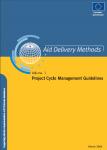
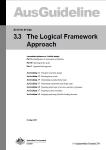
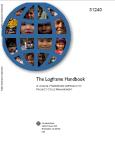
Training Material
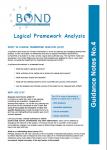
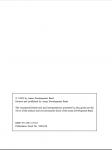
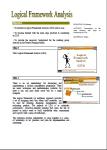
Before starting with the activity design and the construction of the logframe matrix, it is important to undertake a structured analysis of the existing situation. LFA incorporates four main analytical elements to help guide this process:
- Problem Analysis: involves identifying what the main problems are and establishing the cause and effect relationships which result in, and flow from, these problems (see also problem and preference ranking, or problem tree analysis as methods for problem identification).
- Stakeholder Analysis: having identified the main problems and the cause and effect relationship between them, it is then important to give further consideration to who these problems actually impact on most, and what the roles and interests of different stakeholders might be in addressing the problems and reaching solutions (see also stakeholder identification).
- Analysis of Objectives: objective trees should be prepared after the problem tree has been completed and an initial stakeholder analysis has been undertaken. This will give an image of an improved situation in the future.
- Analysis of Strategies: comparison of different options to address a given situation.
The Logical Framework Matrix (Logframe)
The results of the stakeholder, problem, objectives and strategy analysis are used as the basis for preparing the Logical Framework Matrix. The Logical Framework Matrix (or more briefly the logframe) consists of a matrix with four columns and four (or more) rows, which summarise the key elements of a project plan and should generally be between 1 and 4 pages in length. However, this will depend on the scale and complexity of the project.
How to Prepare The Logical Framework Matrix?
(Methodology adapted from BOND 2003; examples taken from EUROPEAN COMMISSION 2004)
First Stage ― TOP DOWN:
- Goal: starting at the top and using the information from the Objective Tree write the overall objective of the project. The overall objective may be beyond the reach of this project on its own, for instances: “To contribute to improved family health and the general health of the rive ecosystem”.
- Purpose: it describes the desired outcome that the project will achieve. This should be clear and brief. Example: “Improved river water quality”.
- Outputs: describe the project intervention strategy. There may be several outputs. Example: “1) Reduced volume of wastewater directly discharged into the river system by households and factories”.
- Activities: these are the tasks that are needed to achieve these outputs. There may be several for each output. Statements should be brief and with an emphasis on action words. Examples: “1.1) Conduct baseline survey of households and businesses; 1.2) Complete engineering specifications for expanded sewerage network, etc.”
- Inputs: when required to do so provide additional information, such as the means and costs, which are needed to carry out these activities.
Second Stage ― WORK ACCROSS:
- Objectively verifiable indicators of achievement: starting from the top to the bottom of the hierarchy of the objectives, begin to work across the logframe identifying the Objective Verifiable Indicators for measuring the progress in terms of quantity, quality and time. There are two kinds of indicators: 1. Impact indicators: related to the overall goal, helps to monitor the achievement and the impact of the project. Example: “Incidence of water borne diseases, skin infections and blood disorders caused by heavy metals, reduced by 50% by 2008, specifically among low income families living along the river”. 2. Process (our outcome) indicators: related to the purpose and results. These measure the extent to which the stated objectives have been achieved. Example: “Concentration of heavy metalcompounds (Pb, Cd, Hg) and untreated sewerage; reduced by 25% (compared to levels in 2003) and meets established national health/pollution control standards by end of 2007”.
- Sources and means of verification: the source of verification should be considered and specified at the same time as the formulation of indicators. This will help to test whether or not the indicators can be realistically measured at the expense of a reasonable amount of time, money and effort. The SOV should specify how, who and when the information will be gathered.
Third Stage ― BOTTOM UP:
- Assumptions: reflecting up from the bottom of the logframe, consider how, if each assumption holds, it will be possible to move to the next stage of the project. Assumptions are external factors that have the potential to influence (or even determine) the success of a project, but lie outside the direct control of project managers. Assumptions are usually progressively identified during the analysis phase. The analysis of stakeholders, problems, objectives and strategies will have highlighted a number of issues (i.e. policy, institutional, technical, social and/or economic issues) that will impact on the project ‘environment’, but over which the project may have no direct control. In the case of the river water pollution example, important assumptions might include issues related to: 1. Rainfall and river flow (beyond the project’s control, but potentially critical in terms of changes in levels/concentration of pollutants found in the river); 2. Householders and businesses willingness to pay for improved sewerage connexions.
Applicability
The logframe is applied when planning, implementing and evaluating specific projects and programmes within an action plan. It is valuable for carrying out logical checks during project design as well as for monitoring progress and reviewing activities and output during project implementation (PHILIP et al. 2008).
Using LFA for project or program design imposes rigour in assessing what is to be achieved and the assumptions behind what interventions and activities will be required. Many international donors, such as the Asian Development Bank and the European Commission, require projects they fund to be designed according to an LFA (WAGENINGEN UR 2010).
Advantages
- During initial stages, it can be used to test project ideas and concepts for relevance and usefulness
- It guides systematic and logical analysis of the key interrelated elements that constitute a well-designed project (THE WORLD BANK 2000)
- It defines linkages between the project and external factors
- During implementation, the logframe serves as the main reference for drawing up detailed work plans, terms of reference, budgets, etc (WAGENINGEN UR 2010)
- A logframe provides indicators against which the project progress and achievements can be assessed (WAGENINGEN UR 2010)
- It provides a shared methodology and terminology among governments, donor agencies, contractors and clients (THE WORLD BANK 2000)
Disadvantages
- Focusing too much on problems rather than opportunities and vision (WAGENINGEN UR 2010)
- Organisations may promote a blueprint, rigid or inflexible approach, making the logframe a straitjacket to creativity and innovation (THE WORLD BANK 2000)
- Limited attention to problems of uncertainty where a learning or adaptive approach to project design and management is required (WAGENINGEN UR 2010)
- The strong focus on results can miss the opportunity to define and improve processes
References 
AUSAID (Editor) (2005): AusGuidelines 3.3 The Logical Framework Approach. Sydney: Commonwealth of Australia. URL [Accessed: 07.08.2010].
BOND (Editor) (2003): Logical Framework Analysis. London: BOND (Networking for International Development). URL [Accessed: 06.08.2010].
EUROPEAN COMMISSION (Editor) (2004): Aid Delivery Methods, Project Cycle Management Guidelines . Brussels: European Commission - EuropeAid Cooperation Office. URL [Accessed: 07.08.2010].
SALDANHA, C.; WHITTLE, J. (Editor) (1998): Using the Logical Framework for Sector Analysis and Project Design: A User’s Guide. Manila: Asian Development Bank. URL [Accessed: 22.04.2012].
PHILIP, R.; ANTON, B.; BONJEAN, M.; BROMLEY, J.; COX, D.; SMITS, S.; SULLIVAN, C. A.; NIEKERK, K. van; CHONGUICA, E.; MONGGAE, F.; NYAGWAMBO, L.; PULE, R.; BERRAONDO LOEPEZ, M. (2008): Local Government and Integrated Water Resources Management (IWRM) Part III: Engaging in IWRM – Practical Steps and Tools for Local Governments. Freiburg: ICLEI European Secretariat GmbH. URL [Accessed: 17.04.2012].
THE WORLD BANK (Editor) (2000): The Logframe Handbook: A Logical Framework Approach to Project Cycle Management. Washington DC: The World Bank. URL [Accessed: 23.07.2010].
WAGENINGEN UR (Editor); PPM&E Resource Portal (Editor) (2010): Participatory Planning Monitoring & Evaluation, Managing and Learning for Impact in Rural Development. URL[Accessed: 23.07.2010].
Further Readings 
EUROPEAN COMMISSION (Editor) (2004): Aid Delivery Methods, Project Cycle Management Guidelines . Brussels: European Commission - EuropeAid Cooperation Office. URL [Accessed: 07.08.2010].
These Guidelines have been prepared to support ongoing improvements in the quality of EC development assistance. Part 2 offers an excellent description of the logical framework approach and how to construct the logframe matrix.
AUSAID (Editor) (2005): AusGuidelines 3.3 The Logical Framework Approach. Sydney: Commonwealth of Australia. URL [Accessed: 07.08.2010].
These guidelines present the Logical Framework Approach, with the analysis of the situation and how to prepare the related matrix.
THE WORLD BANK (Editor) (2000): The Logframe Handbook: A Logical Framework Approach to Project Cycle Management. Washington DC: The World Bank. URL [Accessed: 23.07.2010].
This handbook summarises the rationale and essential elements of the logframe for practitioners. In its Annex #1, the document presents examples of logframe Matrixes of typical projects of the Bank.
Training Material 
BOND (Editor) (2003): Logical Framework Analysis. London: BOND (Networking for International Development). URL [Accessed: 06.08.2010].
This short tutorial presents a three stages process to prepare the Logical Framework Matrix, with examples and tips.
SALDANHA, C.; WHITTLE, J. (Editor) (1998): Using the Logical Framework for Sector Analysis and Project Design: A User’s Guide. Manila: Asian Development Bank. URL [Accessed: 22.04.2012].
The logical framework is presented as a conceptual and analytical tool for undertaking sector analysis, project planning, and project management. This guide emphasises the basic concepts and underlying processes inherent in applying the logical framework. This guide uses a simplified example from the transport sector to illustrate these concepts and processes.
UNSO (Editor) (2000): Logical Framework Analysis. Presentation at the Capacity Building Workshop for Dryland Management, Beirut Lebanon May 3-5 2000. UNSO (Office to Combat Desertification and Drought) . URL [Accessed: 06.08.2010].
This presentation gives an introduction to the Logical Framework Analysis (LFA) and its uses, so the readers will become familiar with the main steps in conducting LFA. It also gives the necessary background for to prepare the Project Planning Matrix.
Important Weblinks
http://www.ausaid.gov.au/ [Accessed: 27.05.2010]
This guide by AustralianAID presents a range of downloadable documents on every step of a project cycle.
http://portals.wi.wur.nl/ [Accessed: 27.05.2010]
This website is essential in providing introductions to project and program management, as well as providing a quick selection of key resources in relation to specific areas of the Logical Framework Approach.
http://programs.online.american.edu [Accessed: 30.04.2015]
A short description of the structure an components of a logical framework.
Thank you friends
Wednesday, 25 October 2017
Bidar history
Bidar is a historic place located in the north-eastern part of the South Indian state of Karnataka. Bidar enjoys a picturesque situation, having been situated and built on the brink of a plateau, and thus commanding lovely views of the lowlands (talghat) towards the north and the east. Its latitude is 17°55'N., its longitude 77°32' E., and the height above the sea-level 2,330 feet (710 m). The climate is bracing and the temperature in the hottest season does not usually rise above 105 °F (41 °C). The Bidar plateau is an irregular oblong, 22 miles (35 km) in length and 12 miles (19 km) in extreme breadth.[1]:
We live in a divided world where far too many people live in abject poverty. To help these people get out of poverty is good for the world as a whole, for great disparities in wealth will lead to violence and terrorism and no one can live in peace and harmony. None of the Millennium Development Goals (MDGs) can be achieved if we fail to address the problem of poverty and ensure livelihood security for the majority of the poor.
A vast majority of the poor live in the rural areas of developing countries and are dependent on agriculture or fishing for a living. They need information directly relevant to their livelihoods. Agriculture-related information is often one of the most immediate needs, since small-scale agriculture is very important to household incomes in rural areas. Information on current crop prices, fertiliser and pesticide costs, and the availability of improved seeds and low-cost improvements in farm technology can help farmers buy farm inputs and equipment of good quality at the right price, or help them successfully obtain credit.[1] Information on government entitlements and training programmes, opportunities for developing new products, and markets for environmental goods[2] is also useful. Without such information, poor families find it hard to take advantage of new opportunities for generating income and increasing their assets.
Many asset-less poor migrate to cities far and near and are constantly on the lookout for opportunities to work in construction sites, ports, factories and wherever they can be employed. They are often exploited and work in conditions far from satisfactory. They will be happy to have information on where work is available and wages are good.
This report looks at a few examples of how access to information helps improve the lives of people and how new technologies are being used in getting information to those who need it.
n this lesson, we will explore three very small but important words in the English language: the articles a, an and the. These are words that you use in almost every sentence that you speak or write. Learn about the significance of articles, when to use them and some examples.
Definition of Articles
An article is a word used to modify a noun, which is a person, place, object, or idea. Technically, an article is an adjective, which is any word that modifies a noun. Usually adjectives modify nouns through description, but articles are used instead to point out or refer to nouns. There are two different types of articles that we use in writing and conversation to point out or refer to a noun or group of nouns: definite and indefinite articles.
Definite Article
Let's begin by looking at the definite article. This article is the word 'the,' and it refers directly to a specific noun or groups of nouns. For example:
- the freckles on my face
- the alligator in the pond
- the breakfast burrito on my plate
Each noun or group of nouns being referred to - in these cases freckles, alligator, and breakfast burrito - is direct and specific.
Indefinite Articles
Indefinite articles are the words 'a' and 'an.' Each of these articles is used to refer to a noun, but the noun being referred to is not a specific person, place, object, or idea. It can be any noun from a group of nouns. For example:
- a Mercedes from the car lot
- an event in history
In each case, the noun is not specific. The Mercedes could be any Mercedes car available for purchase, and the event could be any event in the history of the world.
Article Usage with Examples
Properly using a definite article is fairly straightforward, but it can be tricky when you are trying to figure out which indefinite article to use. The article choice depends on the sound at the beginning of the noun that is being modified. There is a quick and easy way to remember this.
If the noun that comes after the article begins with a vowel sound, the appropriate indefinite article to use is 'an.' A vowel sound is a sound that is created by any vowel in the English language: 'a,' 'e,' 'i,' 'o,' 'u,' and sometimes 'y' if it makes an 'e' or 'i' sound. For example:
- an advertisement on the radio (this noun begins with 'a,' which is a vowel)
- an element on the periodic table (this noun begins with 'e,' which is also a vowel)
If the noun that comes a
About part of speech
1. Noun
This part of a speech refers to words that are used to name persons, things, animals, places, ideas, or events. Nouns are the simplest among the 8 parts of speech, which is why they are the first ones taught to students in primary school.
Examples:
- Tom Hanks is very versatile.
- The italicized noun refers to a name of a person.
- Dogs can be extremely cute.
- In this example, the italicized word is considered a noun because it names an animal.
- It is my birthday.
- The word “birthday” is a noun which refers to an event.
There are different types of nouns namely:
- Proper– proper nouns always start with a capital letter and refers to specific names of persons, places, or things.
- Examples: Volkswagen Beetle, Shakey’s Pizza, Game of Thrones
- Common– common nouns are the opposite of proper nouns. These are just generic names of persons, things, or places.
- Examples: car, pizza parlor, TV series
- Concrete– this kind refers to nouns which you can perceive through your five senses.
- Examples: folder, sand, board
- Abstract- unlike concrete nouns, abstract nouns are those which you can’t perceive through your five senses.
- Examples: happiness, grudge, bravery
- Count– it refers to anything that is countable, and has a singular and plural form.
- Examples: kitten, video, ball
- Mass– this is the opposite of count nouns. Mass nouns are also called non-countable nouns, and they need to have “counters” to quantify them.
- Examples of Counters: kilo, cup, meter
- Examples of Mass Nouns: rice, flour, garter
- Collective– refers to a group of persons, animals, or things.
- Example: faculty (group of teachers), class (group of students), pride (group of lions)
This great list of nouns can help you explore more nouns.
2. Pronoun
A pronoun is a part of a speech which functions as a replacement for a noun. Some examples of pronouns are: I, it, he, she, mine, his, hers, we, they, theirs, and ours.
Sample Sentences:
- Janice is a very stubborn child. She just stared at me and when I told her to stop.
- The largest slice is mine.
- We are number one.
The italicized words in the sentences above are the pronouns in the sentence.
3. Adjective
This part of a speech is used to describe a noun or a pronoun. Adjectives can specify the quality, the size, and the number of nouns or pronouns.
Sample Sentences:
- The carvings are intricate.
- The italicized word describes the appearance of the noun “carvings.”
- I have two hamsters.
- The italicized word “two,” is an adjective which describes the number of the noun “hamsters.”
- Wow! That doughnut is huge!
- The italicized word is an adjective which describes the size of the noun “doughnut.”
4. Verb
This is the most important part of a speech, for without a verb, a sentence would not exist. Simply put, this is a word that shows an action (physical or mental) or state of being of the subject in a sentence.
Examples of “State of Being Verbs” : am, is, was, are, and were
Sample Sentences:
- As usual, the Stormtroopers missed their shot.
- The italicized word expresses the action of the subject “Stormtroopers.”
- They are always prepared in emergencies.
- The verb “are” refers to the state of being of the pronoun “they,” which is the subject in the sentence.
5. Adverb
Just like adjectives, adverbs are also used to describe words, but the difference is that adverbs describe adjectives, verbs, or another adverb.
The different types of adverbs are:
- Adverb of Manner– this refers to how something happens or how an action is done.
- Example: Annie danced gracefully.
- The word “gracefully” tells how Annie danced.
- Adverb of Time- this states “when” something happens or “when” it is done.
- Example: She came yesterday.
- The italicized word tells when she “came.”
- Adverb of Place– this tells something about “where” something happens or ”where” something is done.
- Example: Of course, I looked everywhere!
- The adverb “everywhere” tells where I “looked.”
- Adverb of Degree– this states the intensity or the degree to which a specific thing happens or is done.
- Example: The child is very talented.
- The italicized adverb answers the question, “To what degree is the child talented?”
6. Preposition
This part of a speech basically refers to words that specify location or a location in time.
Examples of Prepositions: above, below, throughout, outside, before, near, and since
Sample Sentences:
- Micah is hiding under the bed.
- The italicized preposition introduces the prepositional phrase “under the bed,” and tells where Micah is hiding.
- During the game, the audience never stopped cheering for their team.
- The italicized preposition introduces the prepositional phrase “during the game,” and tells when the audience cheered.
7. Conjunction
The conjunction is a part of a speech which joins words, phrases, or clauses together.
Examples of Conjunctions: and, yet, but, for, nor, or, and so
Sample Sentences:
- This cup of tea is delicious and very soothing.
- Kiyoko has to start all over again because she didn’t follow the professor’s instructions.
- Homer always wanted to join the play, but he didn’t have the guts to audition.
The italicized words in the sentences above are some examples of conjunctions.
8. Interjection
This part of a speech refers to words which express emotions. Since interjections are commonly used to convey strong emotions, they are usually followed by an exclamation point.
Examples of Interjections:
Grammar
Part of Speech Overview
- Noun. This part of a speech refers to words that are used to name persons, things, animals, places, ideas, or events. ...
- Pronoun. A pronoun is a part of a speech which functions as a replacement for a noun. ...
- Adjective. ...
- Verb. ...
- Adverb. ...
- Preposition. ...
- Conjunction. ...
- Interjection.
Monday, 23 October 2017
Right to Information (RTI) is an Act of the Parliament of India to provide for setting out the practical regime of right to information for citizens and replaces the erstwhile Freedom of information Act, 2002. Under the provisions of the Act, any citizen of India may request information from a "public authority" (a body of Government or "instrumentality of State") which is required to reply expeditiously or within thirty days. The Act also requires every public authority to computerise their records for wide dissemination and to proactively certain categories of information so that the citizens need minimum recourse to request for information formally.
This law was passed by Parliament on 15 June 2005 and came fully into force on 12 October 2005. The first application was given to a Pune police station. Information disclosure in India was restricted by the Official Secrets Act 1923and various other special laws, which the new RTI Act relaxes. It codifies a fundamental right of citizens.
Subscribe to:
Comments (Atom)



